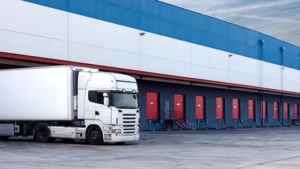
The Art of Route Optimization and Local Restrictions Compliance
In the intricate web of global logistics, efficient route optimization stands as a cornerstone for success. However, the complexities of navigating diverse landscapes, varying regulations, and local restrictions pose significant challenges for businesses operating across borders. In this blog essay, we’ll explore how route optimization works, how different countries adhere to local restrictions, and how a Transport Management System (TMS) can be a game-changer in this dynamic environment.
Understanding Route Optimization:
Route optimization is the process of determining the most efficient paths for transportation operations, considering factors such as distance, travel time, fuel consumption, vehicle capacity, and delivery constraints. Through the use of algorithms and advanced optimization techniques, businesses can identify optimal routes that minimize costs, maximize resource utilization, and ensure timely deliveries.
Navigating Local Restrictions:
One of the key challenges in route optimization is navigating local restrictions imposed by different countries and regions. These restrictions can include road closures, traffic regulations, weight limits, height restrictions, tolls, and environmental zones. Failure to comply with local restrictions can result in delays, fines, or even legal consequences, making it essential for businesses to stay informed and plan their routes accordingly.
How Different Countries Adhere to Local Restrictions:
Countries around the world have varying regulations and enforcement practices when it comes to local restrictions. Some countries may have strict enforcement of weight limits and vehicle dimensions, while others may have more lenient regulations. Additionally, factors such as infrastructure development, urbanization, and environmental concerns can influence the implementation of local restrictions.
The Role of Transport Management Systems (TMS):
A Transport Management System (TMS) serves as a powerful tool for addressing the challenges of route optimization and local restrictions compliance. Here’s how TMS can be a game-changer in this regard:
- Real-Time Data Integration: TMS integrates with various data sources, including GPS, traffic updates, weather forecasts, and regulatory databases, to provide real-time insights into route conditions and local restrictions. This enables businesses to make informed decisions and adapt to changing circumstances on the fly.
- Algorithmic Optimization: TMS utilizes advanced algorithms to optimize routes based on multiple factors, including distance, traffic patterns, delivery windows, and local restrictions. By analyzing vast amounts of data and calculating optimal routes, TMS helps businesses minimize costs and maximize efficiency in their transportation operations.
- Customization and Adaptability: TMS offers customization options that allow businesses to tailor route plans to their specific requirements and preferences. Whether it’s avoiding certain roads or optimizing for fuel efficiency, TMS empowers businesses to optimize routes according to their unique needs while adhering to local restrictions.
- Compliance Management: TMS provides tools for managing regulatory compliance, including monitoring local restrictions, obtaining permits, and ensuring adherence to legal requirements. By centralizing compliance management within a single platform, TMS helps businesses avoid penalties and maintain regulatory compliance across borders.
Conclusion:
In the ever-evolving landscape of global logistics, efficient route optimization and compliance with local restrictions are essential for success. By leveraging the capabilities of Transport Management Systems (TMS), businesses can navigate the complexities of route planning, mitigate risks associated with local restrictions, and optimize their transportation operations for maximum efficiency and cost savings. As logistics continue to evolve and global supply chains become increasingly interconnected, TMS will play an increasingly critical role in driving success and maintaining competitiveness in the global marketplace.





